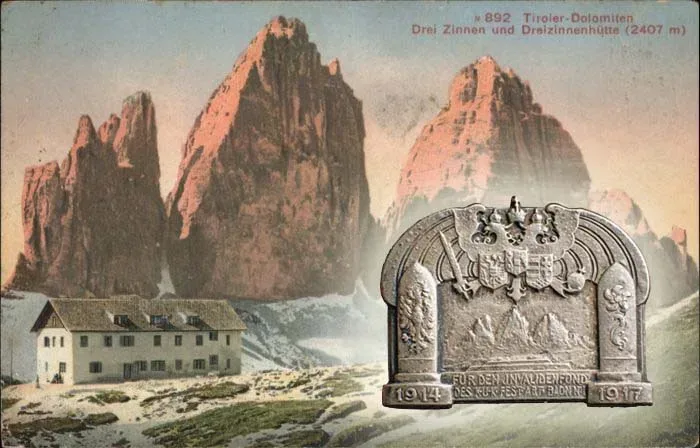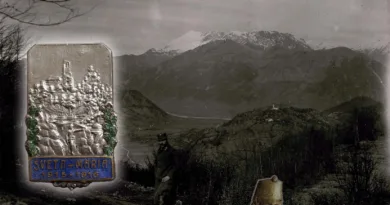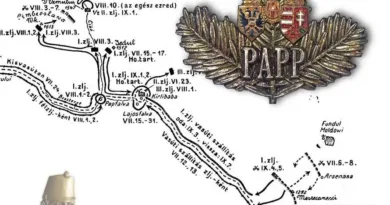Drei Zinnen / Tre Cime di Lavaredo
During the roundtrip, I occasionally show natural beauties on the badges. That’s because we’re running out of city badges.
Drei Zinnen is a triple peak in the Sexten-Dolomites, on the outskirts of South Tyrol. Grosse Zinne is the highest peak with 2,999 meters. The German word means peak, but also prism-like teeth between the slopes of medieval castles. It is a popular place to hike, with many tracking and rock climbing opportunities and via ferrata routes. Its highest peak was first climbed in 1869. Since 2009 it has been a World Heritage Site.

Since May 1915, the area has been continuously engaged in combat along the Italian border, even in this part. The front stretched directly below the peaks. The front was protected by built-in forts and artillery points. In this place, the artillery support was supplied by the 1st Division of Fort Artillery. The unit’s command was in Brixen, Tirol. The crew was from Upper Austria and Salzburg. At first, the front section was guarded only by the Tyrolean territorial protection infantry units (Landesschützen). Some peaks were captured by the Italians on the Austrian side of the state border. On May 25, 1915, the Italians destroyed the guest house shown on the postcard with artillery fire. The main struggle was for the possession of nearby, easier-to-climb rock towers. Between 1915 and 1917, defenders cut cover, impact positions and corridors in several places. The steep peaks of Drei Zinnen were unsuitable for any major combat activities. Only observers could climb the rocks. Thus, the fantastic natural beauty survived the war essentially unscathed.

Following the collapse, Austria lost this part of the Alps to Italy. The Dolomites are now a popular and famous center of high-mountain sports in Italy. Unfortunately, I have not been able to get any information on how the Brixen Fort Artillery unit was deployed in the area. One of the letter seals shows an armor-domed howitzer in front of Drei Zinnen, but it’s probably just an illustration. In any case, the artillery could have been deployed somewhere further back, not so directly to the front line, so the positions were not in the immediate vicinity of the mountain peaks.


The gunners’ cap badge is one of the most beautiful pieces, with the bold peaks on it. The two letter seals attached to the post were also issued by this unit. One accurately follows the pattern of the badge, the other quotes it only in the main motif. Both come from the collection of Gábor Csiszér. A postcard released before the Great War shows the safe house. The photo showing today’s conditions shows no change in the rocks: fortunately, they were not damaged in the war.






[…] beautiful badge of the 1st Battalion was already included here. Now I have taken it out again to present it together with the newly discovered field […]